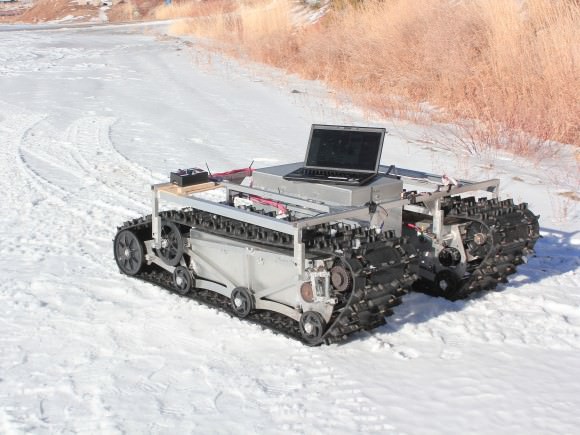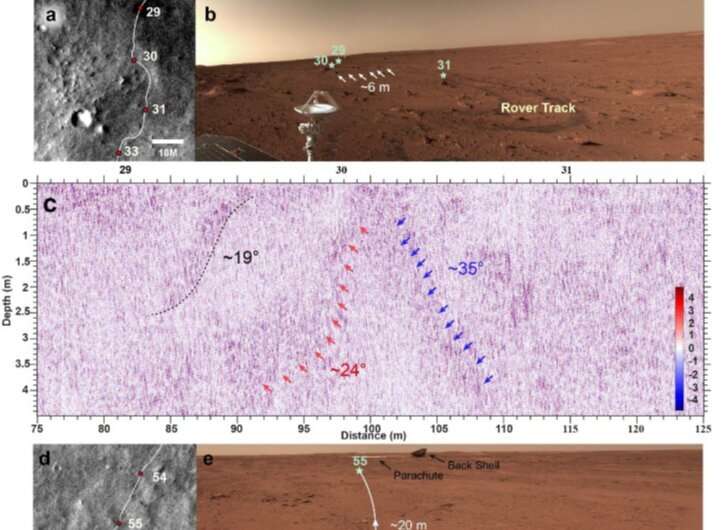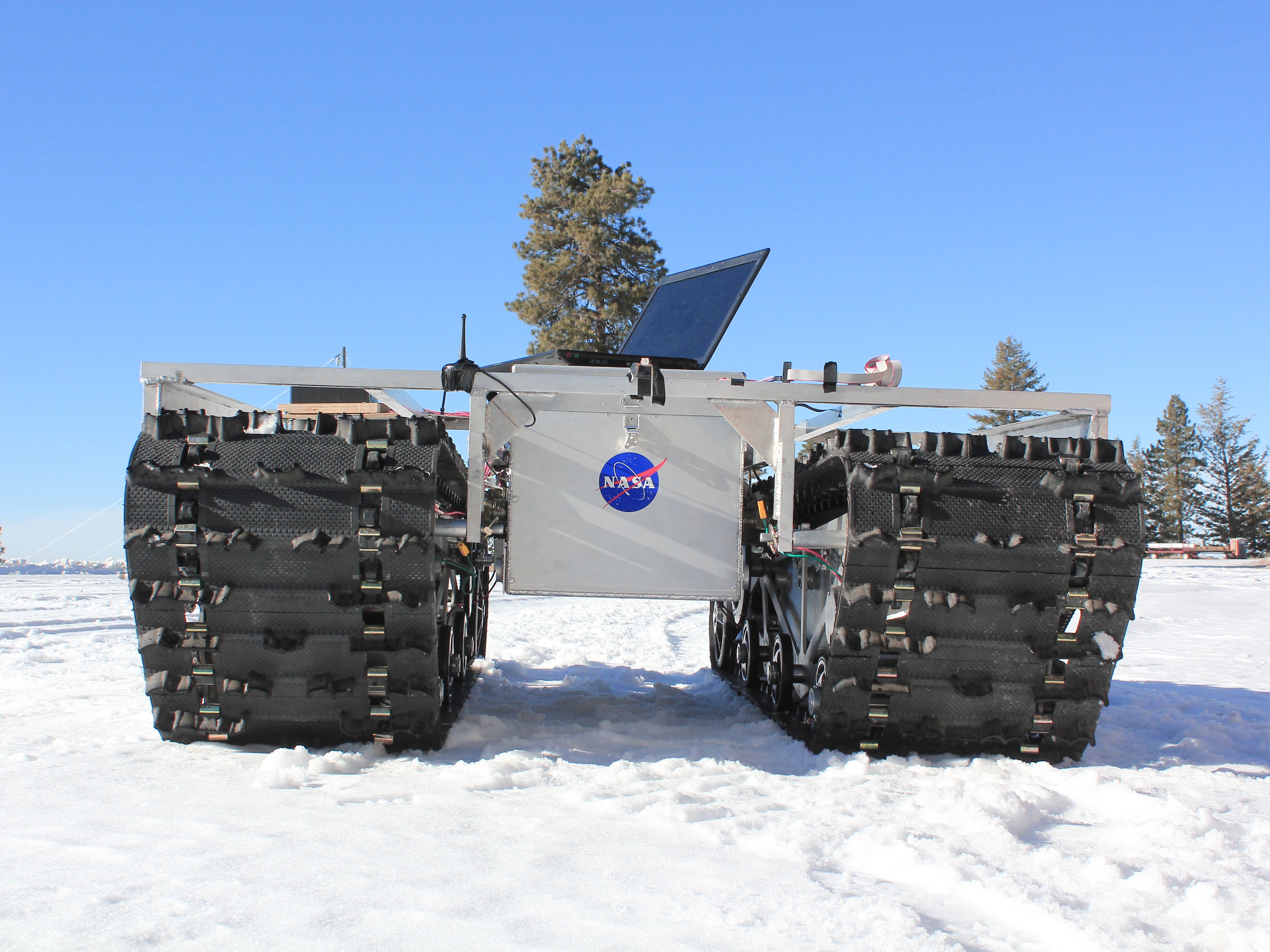The ongoing effort to under Martian geology and the planet’s history continues. A recent paper from a scientific team in China looks at the data collected by Zhurong, a rover that has been in place on the Red Planet since 2021. While it didn’t find any evidence of water in the basin it was looking in, it did find some interesting buried features and provided more data to our mounting understanding of one of our nearest neighbors.
Continue reading “China’s Rover Used Radar to Look Deep Beneath the Surface of Mars. What Did it Find?”Meet GROVER the Rover, Set For Greenland Exploration
How fast is Greenland’s ice sheet melting in response to climate change, and how is it recovering? A new NASA rover with the friendly name of GROVER (Greeland Rover and Goddard Remotely Operated Vehicle for Exploration and Research) is going to try to figure that out.
GROVER will rove across a small area of the massive ice sheet at a location called Summit Camp, which is a National Science Foundation outpost. On board it has ground-penetrating radar that is intended to figure out how the snow builds up in layers through time.
“Robots like GROVER will give us a new tool for glaciology studies,” stated Lora Koenig, a glaciologist at Goddard and science advisor on the project.

The student-designed project came to be during development phases in 2010 and 2011, principally at Boise State University in Idaho. At six feet tall, it’s way more massive than its Sesame Street namesake: it tips the scale at 800 pounds, including solar panels, and has two snowmobile tracks built in to move around.
“GROVER is just like a spacecraft but it has to operate on the ground,” stated Michael Comberiate, a retired NASA engineer and manager of Goddard’s Engineering Boot Camp.
“It has to survive unattended for months in a hostile environment, with just a few commands to interrogate it and find out its status and give it some directions for how to accommodate situations it finds itself in.”
Studies began on May 3 and will continue through June 8.
Source: NASA


